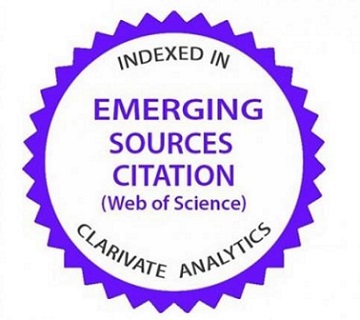Evaluation of attention-motivation level, studying environment and methods of medical faculty students
Tıp fakültesi öğrencilerinin dikkat-motivasyon düzeyleri, çalışma ortam ve yöntemlerinin değerlendirilmesi
DOI:
https://doi.org/10.5152/eurjther.2017.06074Keywords:
Medical education, study environment, studying methodAbstract
Objective: Evaluating study environments, attention–motivation levels while studying, and studying methods of students is ex-tremely important for obtaining purposed results. This study aimed to determine study environments, attention–motivation levels while studying, and studying methods of medicine faculty students.
Methods: Gaziantep University School of Medicine students completed the questionnaire that included questions regarding study environments, attention–motivation levels, and studying methods. The students were asked 11 open-ended questions and 29 Likert-type questions. Statistical analyses of these questions were performed, and some of the questions correlated among them.
Results: The statistically significant differences were determined between the average grade and questions: “I have difficulty in focusing on the subject before starting to study,” “I easily lose concentration while studying,” “I use some pharmaceuticals (except vitamins) for increasing my motivation while studying,” “I use some pharmaceuticals (except vitamins) for increasing my attention while study,” and “I only study during exams.” A significant association was also observed between the average grade and the accommodation of students.
Conclusion: Improving the physical conditions of the study environment of medicine faculty students will contribute to increas-ing their academic success. Making students aware of the components that negatively affect attention and motivation will also positively affect the academic success of students. In addition, determining studying methods of medicine faculty students will contribute to improving personal education strategies.
Metrics
References
Yakıncı C, Almiş H, Kavruk H. Tıp eğitiminde hikâyenin gücü. Çocuk Sağlığı ve Hastalıkları Dergisi 2012; 55: 211-5.
Uskun E, Doğan M, Kişioğlu AN, Baylan S, Uzun E, Akkaya VB. Opinions and practice of teachers on medical education in Süleyman Demirel University Medical Faculty. SDÜ Tıp Fakültesi Dergisi 2004; 11: 19-24.
Baykan Z, Naçar M, Mazıcıoğlu M. Effect of learning strategies on success of student’s. Erciyes Tıp Dergisi 2007; 29: 220-7.
Yalçınoğlu N, Kayı İ, Işık Ş, Aydın T, Zengin Ş, Karabey S. The views of intern doctors on medical education in İstanbul Faculty of Medicine, İstanbul University. İstanbul Tıp Fakültesi Dergisi 2012; 75: 41-5.
Edirne T, Deveci A, Kolusarı A, Can T. Medical faculty class 2 students and medical education. Van Tıp Dergisi 2008; 15: 18-22.
Lamba S, Rawat A, Jacob J, Arya M, Rawat J, Chauhan V, Panchal S. Impact of teaching time on attention and concentration. IOSR Journal of Nursing and Health Science (IOSR-JNHS) 2015; 3: 1-4.
Akbaba S. Eğitimde motivasyon. Atatürk Üniversitesi Kazım Karabekir Eğitim Fakültesi Dergisi 2006: 343-61.
Bay E, Tuğluk MN, Gençdoğan B. Üniversite öğrencilerinin ders çalışma becerilerinin incelenmesi. Türk Eğitim Bilimleri Dergisi 2004; 2: 223-34.
Steinert Y, Snell LS. Interactive lecturing: strategies for increasing participation in large group presentations. Medical Teacher 1999; 21: 37-42.
Shah SMH, Saleem S. Level of Attention of Secondary school students and its relationship with their academic achievement. Journal of Arts and Humanities 2015; 4: 92-106.
Tümkaya S, Bal L. An evaluation of Çukurova University students have study habits with some variables. Çukurova Üniversitesi Sosyal Bilimler Enstitüsü Dergisi 2006; 15: 313-26.
Öğetürk M, Kavaklı A, Kuş İ, Songur A, Zararsız İ, Sarsılmaz M. Tıp öğrencileri nasıl bir anatomi eğitimi istiyor? Tıp Eğitimi Dünyası 2003; 10: 7-13.
Downloads
Published
How to Cite
Issue
Section
License
Copyright (c) 2023 European Journal of Therapeutics

This work is licensed under a Creative Commons Attribution-NonCommercial 4.0 International License.
The content of this journal is licensed under a Creative Commons Attribution-NonCommercial 4.0 International License.


















